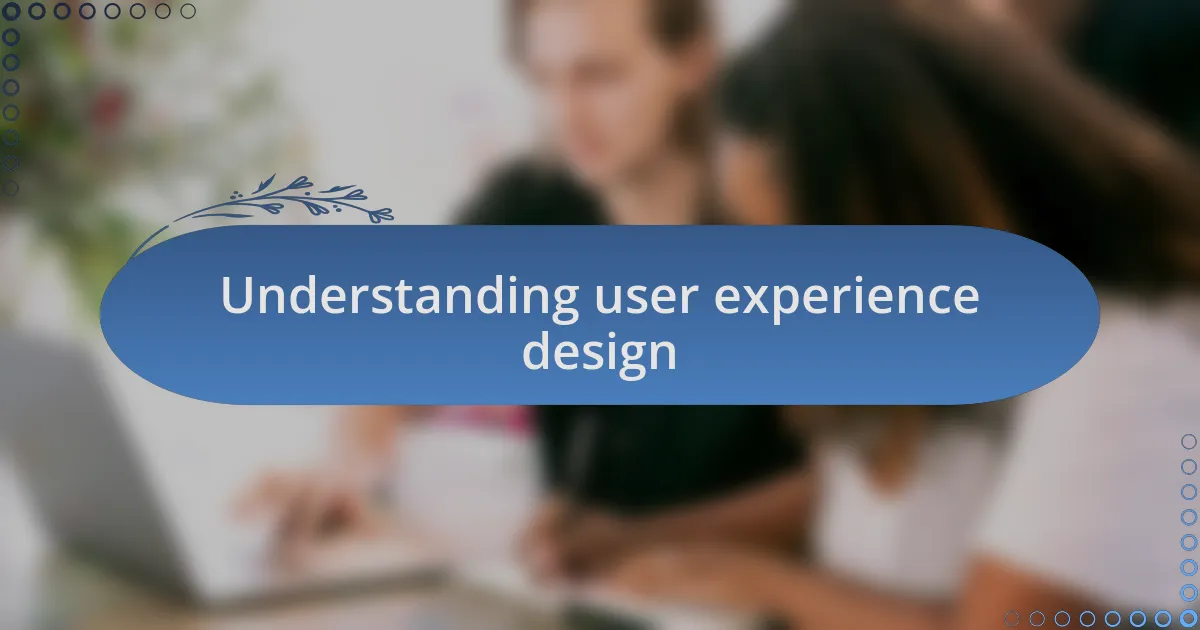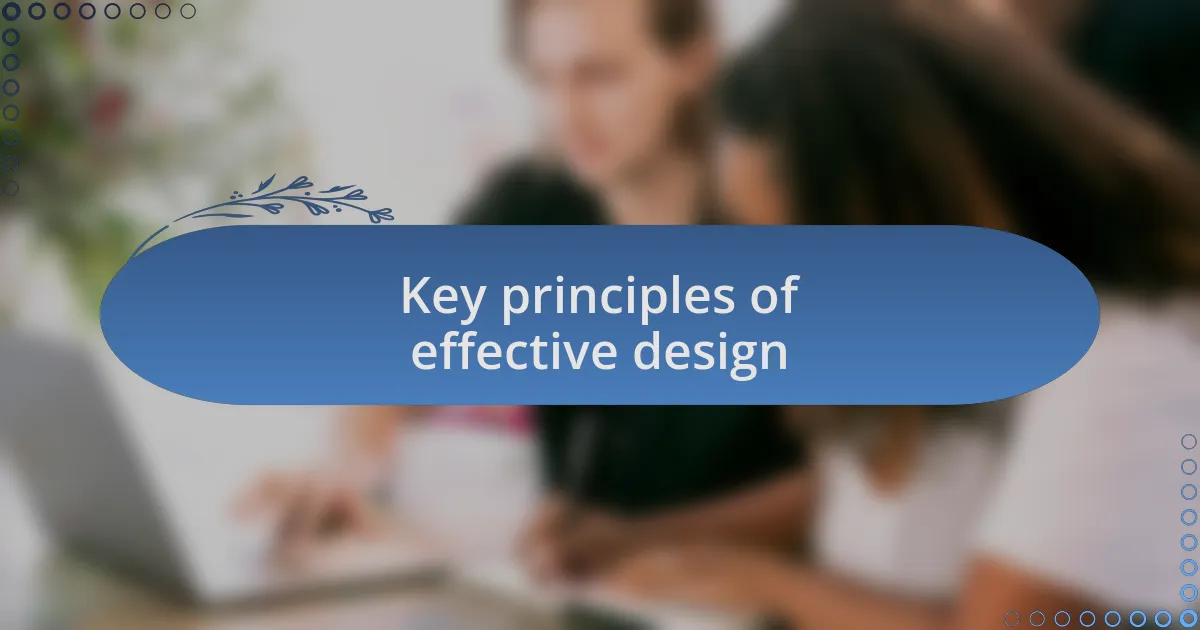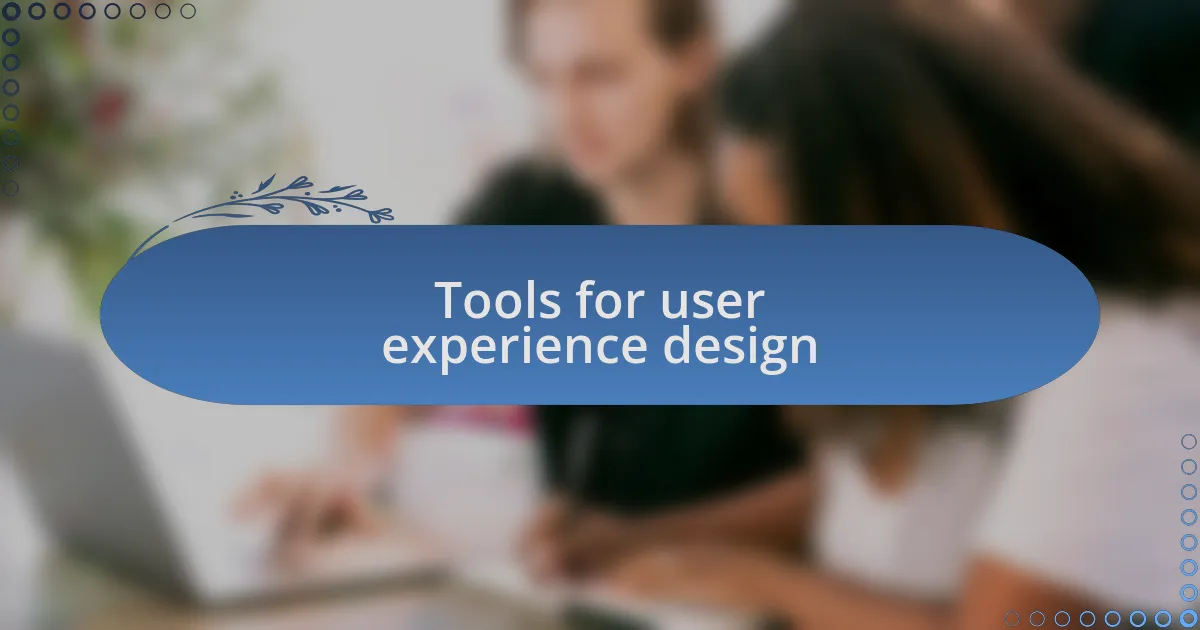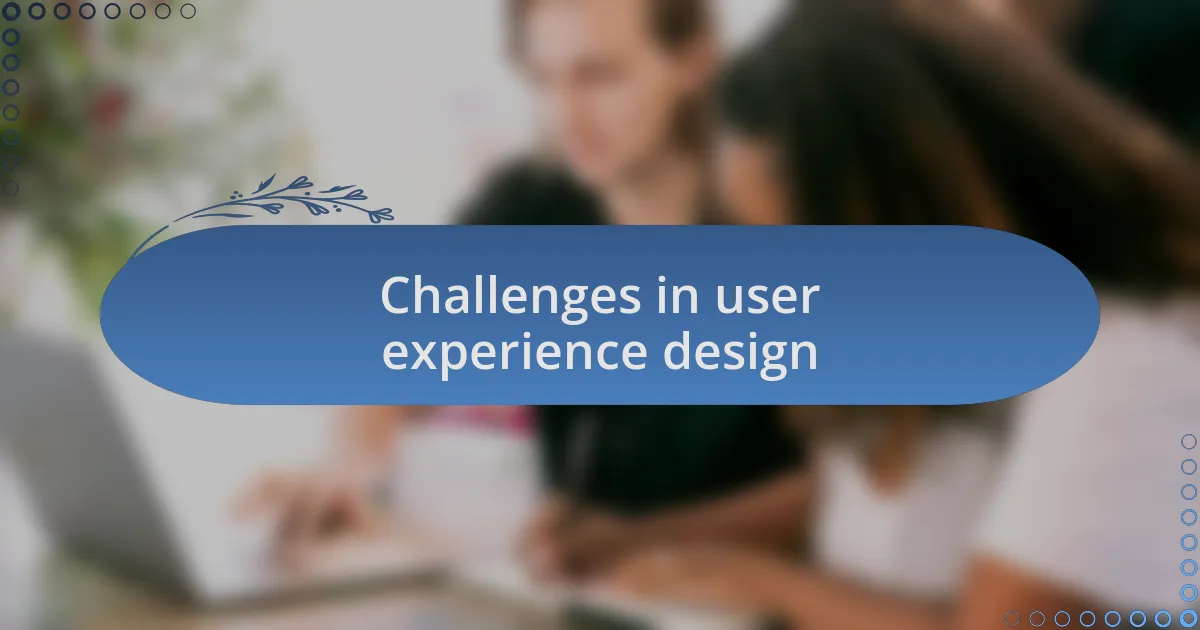Key takeaways:
- User experience design (UX) focuses on creating intuitive and engaging interactions for users, emphasizing the importance of simplicity, accessibility, and consistency.
- Effective design incorporates user feedback and analytics tools, allowing designers to make informed adjustments that enhance user satisfaction.
- Challenges in UX design include balancing aesthetics with functionality, evolving user expectations, and integrating feedback from diverse demographics.
- Continuous testing and iteration based on user insights are essential for improving engagement and ensuring a positive user experience across all devices.

Understanding user experience design
User experience design, often abbreviated as UX design, revolves around enhancing how users interact with a website or application. I remember my first encounter with a poorly designed website that left me frustrated and eager to leave. This experience made me realize just how crucial it is to create a seamless and intuitive experience for users.
At its core, UX design prioritizes the needs and preferences of users, ensuring that every touchpoint is thoughtful and engaging. Have you ever navigated a site where everything just clicked? That’s the magic of effective UX—it makes you feel understood and valued. I strive to emulate that feeling in my own projects, aiming to create environments where users can easily find what they need without overwhelm.
Moreover, understanding user experience involves continuous research and empathy. When I conduct user testing, I pay close attention to how participants react, noting not just their words but their body language. It’s fascinating to see how small adjustments can lead to a significant improvement in user satisfaction. Have you considered the subtle cues that can elevate your own web projects? Recognizing these elements can transform your approach to design.

Key principles of effective design
One of the key principles of effective design is simplicity. I remember when I revamped my portfolio site, I stripped away clutter and focused on essential elements. This minor change led to better engagement; visitors could navigate seamlessly instead of getting lost in a frenzy of content. Have you ever found your eyes glazing over at a busy webpage? It’s a clear reminder that less often leads to more when it comes to design.
Another principle to consider is accessibility. I once received feedback from a visually impaired user who struggled to interact with my site. It pushed me to incorporate features like alt text for images and clear contrast in color schemes. This experience made me realize that good design isn’t just about aesthetics; it’s about ensuring that everyone feels welcomed and able to use your site. Have you thought about how your design choices might impact different users?
Lastly, consistency is crucial in creating a cohesive user experience. I’ve found that using uniform fonts, colors, and patterns throughout a website helps guide users along their journey. On a recent project, maintaining a consistent layout made the site feel more professional and trustworthy. Have you noticed how a consistent design can evoke a sense of reliability? That trust is invaluable in encouraging users to engage with your content.

Tools for user experience design
When it comes to user experience design, I’ve found that choosing the right tools can make all the difference in the creative process. For instance, I often rely on wireframing software like Figma, which allows me to sketch out ideas and iterate quickly. Have you ever experienced the thrill of visualizing a concept that suddenly clicks into place? That’s the power of using the right tool—it makes brainstorming and refining ideas feel effortless.
Another essential tool I use is usability testing platforms like UserTesting. During one project, I gathered user feedback that completely reshaped parts of my design. Seeing actual users interact with my work brought a mix of excitement and apprehension. It was a little nerve-wracking to put my ideas under the microscope, but their insights helped elevate the end product significantly. Have you ever felt that rush when you realize something can be improved upon simply by asking users what they think?
Lastly, I can’t emphasize enough the importance of analytics tools like Google Analytics in the design process. They offer great insights into user behavior that can inform design decisions. Once, I noticed a drop-off in engagement on a specific page, leading me to adjust the layout and call-to-action buttons. It was enlightening to see how minor tweaks created a major impact. How often do we overlook the data that could guide our designs? Embracing these tools not only enhances our understanding but also connects our creative vision to user needs.

Challenges in user experience design
When it comes to user experience design, one of the biggest challenges I’ve faced is balancing aesthetics with functionality. I remember a project where I was so focused on creating a visually stunning layout that I overlooked usability issues. Users felt lost navigating through the site—which was heartbreaking to see, especially after all that effort. How do we ensure beauty doesn’t come at the cost of user engagement?
Another frustration is keeping up with continuously evolving user expectations. Just when I think I’ve nailed a design, I discover users are looking for more intuitive interactions or faster load times. During one redesign, I integrated features based on popular trends, only to later find out that what mattered most was simplicity. Isn’t it ironic how the more we try to innovate, the more we risk becoming complex?
Additionally, integrating feedback from diverse user demographics can be a daunting task. I once conducted a series of interviews with users from different backgrounds and was surprised by how varied their experiences were. Their insights highlighted not only design preferences but also accessibility issues that I hadn’t considered before. How do we adapt our designs to cater to so many perspectives without overwhelming ourselves?

Tips for enhancing user experience
Creating an engaging user experience often starts with simplicity. I recall a time when I revamped a website’s navigation. By streamlining the menu and reducing clutter, users quickly found what they were looking for. Isn’t it fascinating how less really can be more in web design?
Another crucial aspect is mobile optimization. I remember visiting a favorite site only to struggle with a layout that wasn’t responsive on my phone. Frustrating, right? Ensuring that websites function beautifully across all devices not only enhances accessibility but also keeps users coming back for more.
Lastly, testing and iterating based on user feedback is essential. There was a project where I implemented user testing sessions, and the insights were eye-opening. Simple adjustments, like altering button colors and placements, significantly increased interaction rates. How often do we underestimate the voice of our users? Listening can transform an ordinary experience into an extraordinary journey.